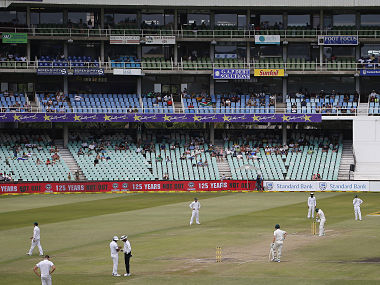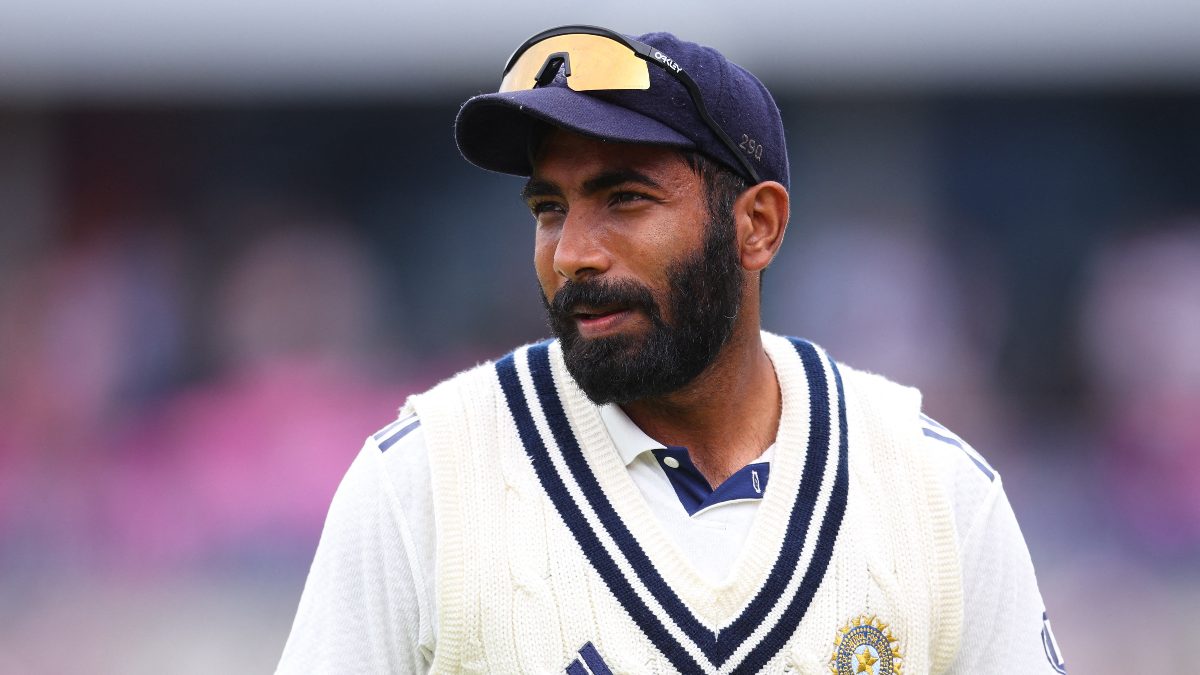The first India vs Windies Test was scheduled to get over on Monday. It was expected to be the weekend entertainment but instead what was served was a boring predictable show which failed to light up things despite encompassing Prithvi Shaw’s debut ton and Ravindra Jadeja’s heroics. Moreover, the action was wrapped up by Saturday late afternoon, inside three days. What made the competition a more sorry affair was that the record win - India’s biggest in Test history - was earned in front of a handful of people. As per a
report , only 10 percent tickets of the 25,000 capacity Rajkot stadium were sold before the start of the match. This despite BCCI’s new strategy of hosting matches in small centres. One of the biggest reasons behind the low turnout and lack of enthusiasm among TV followers is the predictability of the result. With Windies as the competitor, big win was predicted and delivered. [caption id=“attachment_5337871” align=“alignleft” width=“380”] In the Kingsmead Test between Australia and South Africa this year, stands were empty, pointing fingers at the depleted state of Test cricket viewership in the world. AFP[/caption] One could argue that the predictability will wander away with arrival of higher ranked teams, but that’s basically a myth. Apart from the Australia series in 2017, which India won 2-1, they have hardly been troubled at home by any team. Virat Kohli and Co have won nine successive series at home against teams like South Africa, New Zealand and England. And this phenomenon is not limited to just India, winning away from home in Test cricket has become priceless. Home teams have been winning consistently in almost the last two years. The last away side to register a series win overseas was South Africa in Australia in 2016. The No 1 Test team, India have been handed back-to-back overseas series defeat in 2018 against South Africa and England. The pattern is a proof that home advantage has become a side’s most powerful weapon, leading to one-sided competitions. And this sequence cannot be a good news for a format, which is losing relevance consistently despite being called the pinnacle of the sport. In today’s fast paced world, if you want a fan to take five days off his schedule, you must be ready to serve some serious edge of the seat stuff. And the recent narrow yet entertaining defeats for India in Birmingham and The Oval showed that nothing builds up to a great finish like Test cricket. But for that you need conditions which leads to a greater balance and eventually stiffer competition. Test cricket has seen very little change as a format in the past few decades but things around the format needs overhaul. The Rajkot Test wasn’t dictated as much by conditions as it was by the quality of the visiting side but bringing more balance would help make every game extra competitive. Scrap coin toss One-sided bilateral series had become a burden and to get rid of the weight, ICC finally agreed upon Test championship after dragging their feet for years. The concept would provide purpose but that alone won’t help. The disturbing pattern of home side dominance needs treatment. And the beginning should be made by scrapping the coin toss. The idea was declined by the ICC committee a few months back but revisiting the decision would be a wise call. Home conditions have lately become the deciding factor and with conditions playing such a massive role in the outcome of a contest, it’s imperative that the tradition of coin toss is scrapped and the visiting team is allowed to decide to bat or bowl first. Pitch mandate and day-night Tests At the same time, ICC must take over the duty of making the pitches for international matches. Making pitches that produce an even contest between ball and bat should become the golden rule. The host nation cannot be trusted with the duty, instead just like the panel of international umpires, cricket’s governing body should create a pool of curators working under their umbrella, producing quality pitches. Also, why aren’t we playing more of day-night matches? It’s no rocket science that day-night matches have more potential for attracting crowds to stadiums and luring eyeballs through television. Especially for venues like Rajkot, which are far from city and experience harsh summer, it’s criminal to ask fans to make the long travel and watch the match under the blistering sun. Watching the sport should be made a pleasant experience and not a punishment. After all, the fan is the real king. Two-tier system It’s a more radical step but desperate times ask for desperate measures. A two-tier system with relegation and promotion would ensure higher standards of play. Unmatched sides on the basis of ranking system could be put in different groups, ensuring more close matches. The promotion option would also ensure the best sides from the second tier are allowed to compete with the top sides at the elite level. It would also help in expanding the game and in including more teams. The idea was discussed in 2016 but didn’t cut much ice with the BCCI. However, decisions should be taken in the larger interest of the game and it’s the duty of the member boards to think for the game ahead of anything. In a nutshell, it’s high time ICC wakes up from its slumber and smells the coffee before the handful also leave its hands.
The Rajkot Test wasn’t dictated as much by conditions as it was by the quality of the visiting side but bringing more balance would help make Test cricket more competitive
Advertisement
End of Article
Written by Ujwal Singh
Watching sports and writing about it are my favourite things in life and I try to bring you the best from the sporting world at Firstpost. see more


)

)
)
)
)
)
)
)
)



